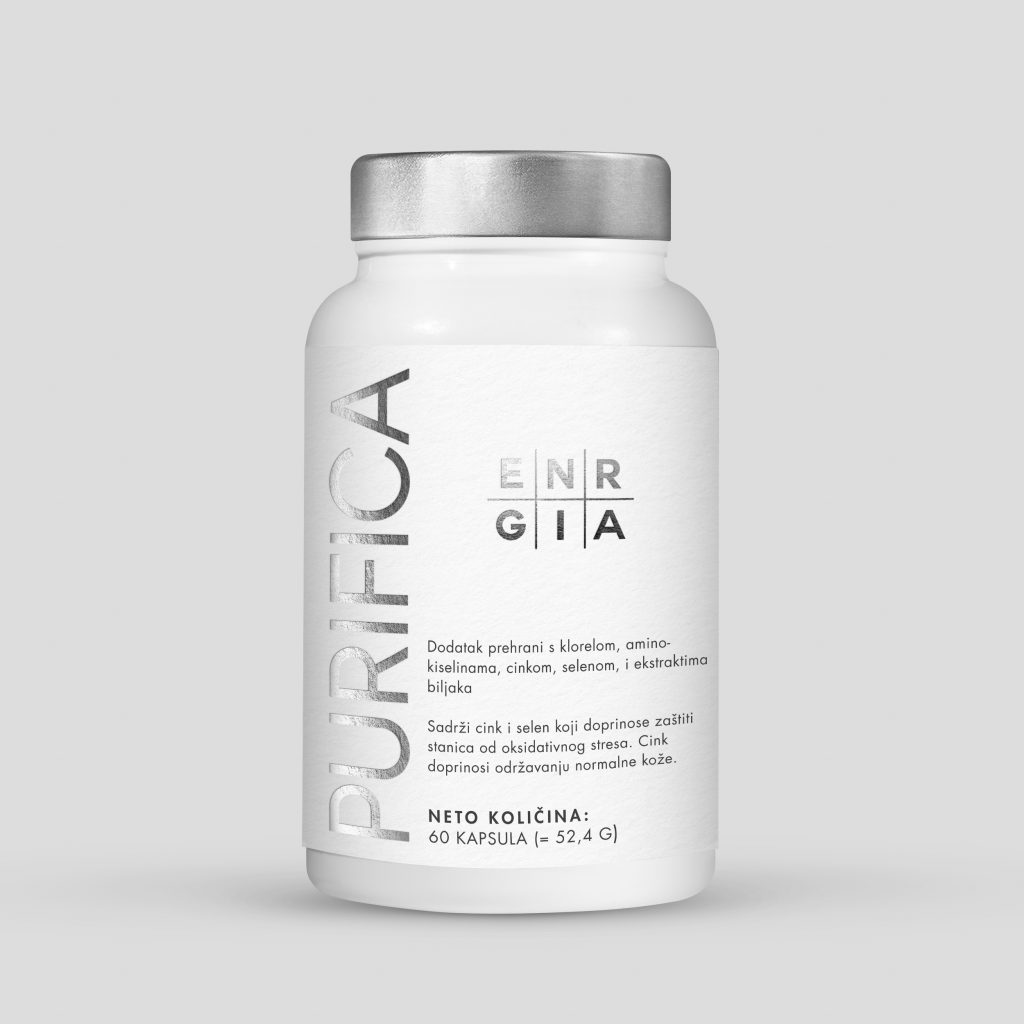Importance of detox before a weight loss diet
After the Holidays, and already at the end of January, our body asks us for a complete reset, a detox to start the year off right. Celebration foods are normally loaded with fats, sugars, additives and tremendous amounts of calories that can affect the normal functioning of our bodies.
That is why before starting a weight loss or healthy eating diet, it is necessary to “empty our body of toxins” so that everything can flow correctly.
Detox for our largest purifying organ
Detox diets are interventional strategies that are intended to facilitate the elimination of toxins and weight loss , thus promoting health and well-being.
The liver is a vital organ involved in a myriad of functions, including production of plasma and bile proteins, metabolism of carbohydrates, lipids, and amino acids, and synthesis of urea. Furthermore, this organ is primarily responsible for the detoxification of xenobiotics, including drugs and toxic endogenous compounds . The detoxification process, also known as xenobiotic metabolism, involves at least two phases with different reactions: in phase I of the internal detox process, toxic products are transformed into more accessible intermediate forms for phase II. These intermediate forms are much more chemically active and therefore more toxic.
The chemical reactions involved in the metabolism of drugs and other toxins usually convert these substances into more water-soluble metabolites , which facilitates their eventual excretion in urine and feces.

Glutathione reductase is a flavoprotein that catalyzes the NADPH-dependent reduction of glutathione disulfide (GSSG) to reduced glutathione (GSH). The reaction is essential for the maintenance of glutathione levels. Glutathione plays a major role as a reducer in oxidation-reduction processes and serves in detoxification and other important cellular functions. The reduced glutathione will be used by glutathione peroxidase for the reduction of peroxide and lipoperoxides, which are reactive oxygen species. This enzyme plays an important role in antioxidant defense and its presence is highly extended in different tissues and organs. https://doi.org/10.1016/S0076-6879(85)13062-4
Some common drugs can be harmful
Paracetamol hepatotoxicity, for example, is the leading cause of drug-induced liver failure. Although some of the mechanisms of acetaminophen-induced liver cell injury are not yet fully understood, some studies suggest that the formation of reactive metabolites, glutathione depletion, and alkylation of proteins, especially mitochondrial proteins, are critical initiating events for the toxicity. The Bcl-2 family members, Bax and Bid, form pores in the outer mitochondrial membrane and release intermembrane proteins, for example, apoptosis-inducing factor and endonuclease G, which then travel to the nucleus and initiate condensation of the mitochondrial membrane. chromatin and DNA fragmentation, respectively. Mitochondrial dysfunction, due to covalent binding, leads to the formation of reactive oxygen and peroxynitrite, which trigger the membrane permeability transition and the collapse of the mitochondrial membrane potential. In addition to the decreased ability to synthesize ATP, more endonuclease G and AIF are released. Endonuclease G, together with an activated nuclear Ca2+-dependent endonuclease, Mg2+, causes the DNA degradation, which prevents cell recovery and regeneration . DOI: 10.1093/toxsci/kfi336
It is at this time that our body will benefit from the use of PURIFICA, a supplement specially designed to provide the components that are needed to achieve a good result in our detox process. Next, we will briefly expose some of its most important assets:
- The chlorella alga provides proteins and amino acids -such as glutamic acid- that are essential for the synthesis of glutathione.
- Cysteine is an amino acid with a thiol group that is readily oxidizable due to its ability to undergo redox reactions . This gives cysteine excellent antioxidant properties. When administered orally, it is a chelator of toxic elements. Cysteine, together with glycine and glutamic acid, are essential for glutathione synthesis, particularly in the presence of vitamins C and E.
- Silybum marianum , better known as milk thistle , is an excellent coadjuvant in antioxidant processes, as well as being hepatoprotective. The seeds and fruits of this plant contain a flavonolignan complex called silymarin, whose active compounds include silybin, isosilybin, silychristin, dihydrosilybin, silydianin, and several others.

Multiple signaling pathways associated with oxidative stress and inflammation are common molecular targets of milk thistle. In addition, flavonolignans are potential PPARγ and ABCA1 agonists, PTP1B (protein tyrosine phosphatase 1B) inhibitors, and metal chelators.https://doi.org/10.1016/j.biopha.2022.113709
Furthermore, it induces the activity of enzymes responsible for the synthesis of reduced glutathione (GSH) and other antioxidant enzymes and is a cofactor of several mitochondrial enzymes.
This plant, with a wide geographical spread, would act as a protector against toxins in people with alcoholic liver disease, fatty liver disease associated with metabolism, viral hepatitis, and drug-induced liver injury. DOI:10.3390/medicines6010041
- Lipoic acid is a powerful endogenous and exogenous antioxidant. It is a disulfide compound soluble in both water and oil. The reduced form, dihydrolipoic acid, represents the active metabolite, increases glucose utilization in mitochondria by supplying acetyl-CoA for acetylcholine production – https://doi.org/10.3164/jcbn.11-005FR
- As if this were not enough, it has the property of regenerating other antioxidants , such as vitamins C and E, as well as reduced glutathione. In turn, lipoic acid regulates various processes, such as nucleic acid synthesis and energy production, through the citric acid cycle.https://doi.org/10.1016/S0891-5849 (97)00371-7
- S-adenosyl-L-methionine -another component of PURIFICA – is an endogenous molecule with hepatoprotective properties linked to redox regulation and methylation. The potential therapeutic value of SAMe was tested in 17 patients with primary biliary cirrhosis, where an increase in glutathione production was seen .https://doi.org/10.1016/j.bbadis.2020.165895
The microbiota is extremely important
The gut microbiota, often referred to as a super organ, comprises up to one hundred trillion microorganisms, and species diversity can vary from person to person . These beneficial bacteria play a decisive role in various biological functions related to metabolism, immunity and neurological responses. The gut microbiota has recently emerged as a potential target for therapeutic applications to prevent and treat obesity and its associated comorbidities .
Recent studies show that there is an ongoing interaction between heavy metals and the microbiome. Heavy metal exposure slows growth and changes the structure of the phyla involved in the gut microbiome. Meanwhile, the gut microbiome tries to detoxify heavy metals by altering physiological conditions, intestinal permeability, and enhancing enzymes to metabolize heavy metals.https://doi.org/10.1016/j.jhazmat.2021.126676
That is why, together with a detox program, it is necessary to take care of and improve our intestinal flora, providing pro and prebiotics.
Conclusion
As with any other procedure, a series of steps must be followed to improve the efficiency of the process, and our body is no exception. At this point we would like to recall the toxic barrel theory , which suggests that our bodies are able to tolerate large amounts of toxins without visibly affecting general functioning, but there comes a point when the barrel fills up and starts to spill. That is when we see the symptoms caused by the toxins.
There are different ways to do it, but it is always good to start at the beginning, draining excess toxins (with DRENA prickly pear powder), provide antioxidants and substances that add value to us in the elimination of free radicals, either oxygen, as well as species from other reagents.







